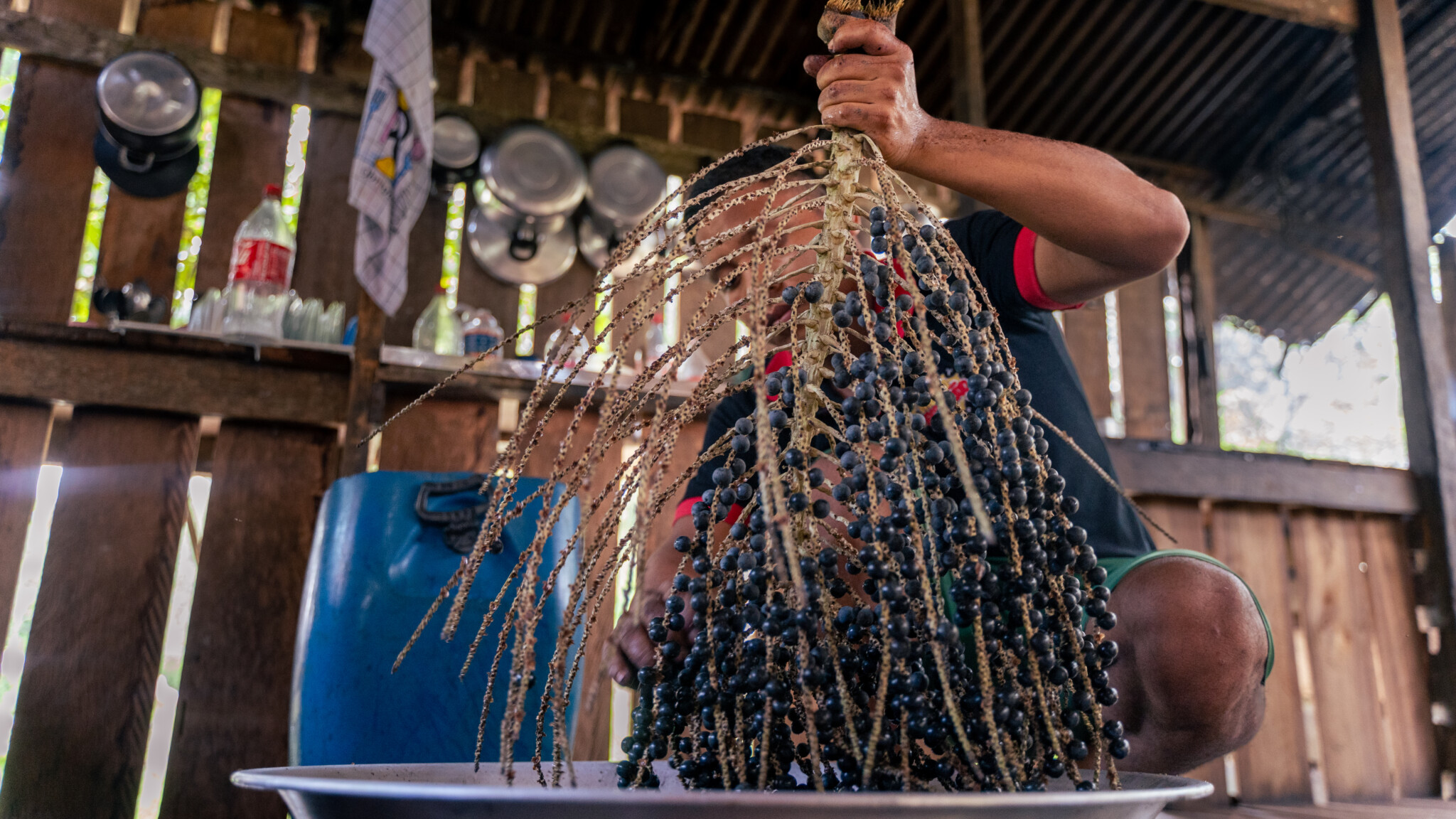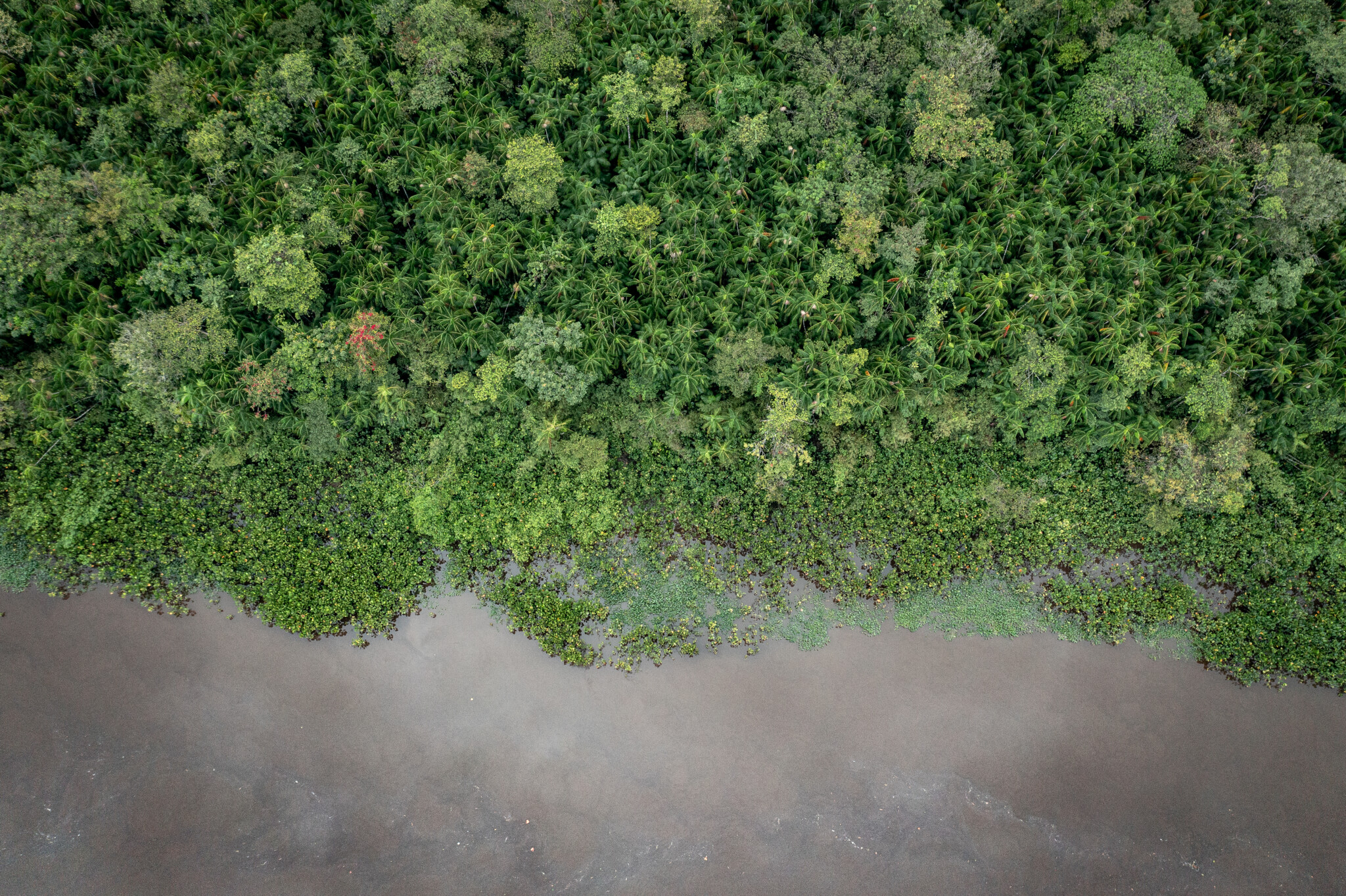How much is a standing forest worth? New N4C documentary explores the rise of the socio-bioeconomy in Brazil

Photos by Priscila Tapajoara and Jaye Renold/If Not Us Then Who?
For centuries, the value of a forest was tied to the extraction of its natural resources, leading to deforestation and ecosystem destruction. This caused significant damage to the climate, biodiversity, livelihoods, and the economy. In 2022, the global financial system directed 35 times more funding to activities that accelerate climate change than to those that work in harmony with nature.
However, this narrative can change. Keeping forests standing can mean economic growth, social development, and a tool to combat the climate crisis.
One of the new regenerative economic models in the spotlight in the past months is the bioeconomy, a practice that proposes to transform agricultural practices, recognize traditional cultures and help achieve climate and biodiversity goals while providing jobs and fair compensation. Recently, the G20 outlined 10 voluntary, non-binding principles aimed at guiding bioeconomy activities, placing the theme in the headlines.
“We have to look at nature as the answer to most of the problems we’re facing”.
Marina Silva, Minister of the Environment and Climate Change of Brazil.
This is not a coincidence. Brazil, the host of the G20 meeting in 2024 and the next COP30 in Belém, is pushing hard on this agenda and leading initiatives within the so-called ‘socio-bioeconomy,’ a concept that emphasizes the role of Brazilian Indigenous Peoples’ wisdom and contributions to the new economy. “The strength of the culture and heritage of these traditional peoples and communities is what makes Brazil this great power of a very diverse socio-biodiversity, and that has huge potential to be harnessed, while respecting the culture of Indigenous peoples, quilombolas and traditional communities”, explains Kleber Karipuna, Executive Coordinator of the Articulation of the Indigenous Peoples of Brazil (APIB).
Home to 60% of the Amazon, Brazil is also the country with the greatest potential to cut carbon emissions by adopting natural climate solutions. A recent study published by the World Resources Institute shows that by fully developing the socio-bioeconomy, the GDP of the Brazilian Amazon could increase by BRL 40 billion annually, achieving zero deforestation and restoring 24 million hectares of forest by 2050.
Globally, the World Bioeconomy Forum estimates that the bioeconomy market is currently worth $4 trillion, potentially reaching $30 trillion by 2050.
However, this growth is intrinsically connected with investments to study the potential of standing forest products, sustainable distribution chains, and infrastructure for local communities on the frontline of sustainable ecosystem management. “The issue of socio-bioeconomy involves innovation, it involves this whole model of relationships with communities and it involves an economic approach. These three levers have to go together. And the turning point comes with public policies that address this issue”, clarifies Priscila Mata, head of Amazon Biodiversity Strategy at Natura, a Brazilian multinational company that developed 44 bio-ingredients based on the richness of Brazilian biomes and incorporated the socio-bioeconomy into the core of its global activities.
The socio-bioeconomy market in Brazil and its potential to tackle climate change globally is the topic of a new documentary produced by Nature4Climate and If Not Us Then Who. The film, the last of the ‘Nature in Action series’, stars Brazilian blackberry açaí producers Uasei, an Indigenous Association in Oiapoque (Amazon State of Amapá), as a case study. In just two years, the practice has been securing revenue streams for over 200 families.
In the new episode, you will also hear from Marina Silva, Minister of the Environment and Climate Change of Brazil, on how the public sector and multilateral action are crucial to escalating the bioeconomy, and observing the carrying capacity of ecosystems. (Read her full interview here).
More photos of Indigenous Association Uasei and the Uaçá Community:

Photo: Priscila Tapajowara/INUTW

Photo: Priscila Tapajowara/INUTW

Photo: Priscila Tapajowara/INUTW

Photo: Priscila Tapajowara/INUTW

Photo: Priscila Tapajowara/INUTW

Photo: Jaye Renold/INUTW

Photo: Priscila Tapajowara/INUTW

Photo: Priscila Tapajowara/INUTW

Photo: Jaye Renold/INUTW
Acknowledgement:
The documentary was created in collaboration with the Articulation of the Indigenous Peoples of Brazil (APIB) and the National Indigenous People Foundation (FUNAI). It also received support from The Nature Conservancy Brazil, the Iepé Institute, the Council of Indigenous Leaders of Oiapoque, and the Association of Indigenous Women in Mutirão.
About:
The Nature in Action series supports naturebase, an interactive tool from Nature4Climate that showcases real-world stories and successful efforts to protect, restore, and sustainably manage ecosystems worldwide. Naturebase is a learning platform for natural climate solutions, enabling informed decision-making for the development of effective and scalable projects globally. Nature4Climate is a coalition of 28 international organizations, serving as a strategic platform for communications, advocacy, and campaigns, aiming to support the delivery of nature-based solutions within climate action strategies.
